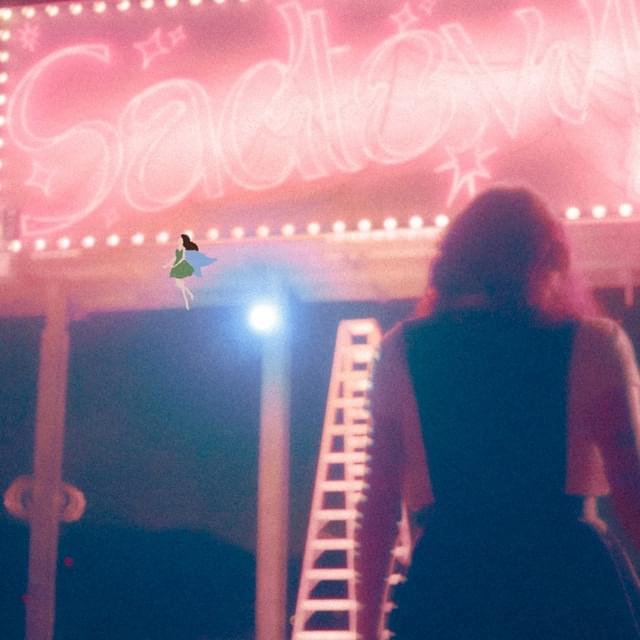Written By Zoe Kallenekos
There are a million songs about heartbreak, but the mark of a great artist is a unique spin that brings new life to the common subject matter. In “Sadtown USA,” singer-songwriter Carol Ades captures the all-encompassing feeling of heartbreak by taking you there directly.
Caroline Pennell, as the New Jersey native was born, started out as a contestant on The Voice before releasing music under her full name for several years. She has also made a name for herself in the music industry for writing songs for and with stars such as Demi Lovato and Ava Max. However, in 2021, Pennell decided to give new life to her own music and began releasing music under her pseudonym, Carol Ades.
The main strength of “Sadtown USA” lies in its simplicity. It begins with four bars of acoustic guitar and sweet, high-pitched humming to set the tone of the song. From there, Ades sings her sorrowful tale of the end of a relationship and the painfully relatable experience of how she “confused a moment with forever.”
What makes this a smart and sharp story of lost love is how Ades as a songwriter picks a specific aspect of this theme to focus on and runs with it. Right there in the very first verse, we see Ades introduce the idea that sadness is something that must be dealt with through sitting with it, no matter how long that takes: “Nothing I can do except surrender / I’ve been crying for an hour / but an hour ain’t enough.” The song is not unlike Ades previous efforts throughout the past year: that combination of a very specific and relatable emotional experience and a tuneful melody with sweet vocals is something Ades has done before with immense success on songs like “Can’t Say No.”
This idea combines with a secondary one, which is the timeless battle of logic vs. emotion. In this song, Ades deals with the fact that few people are so extreme so as to be accurately described as either logical or emotional in personality. Rather, Ades sings about the push and pull between knowing how a situation will turn out, yet still feeling a wave of emotions to the contrary: “I hate that I gotta move on but I can’t until I want to.”
This idea, while unique in its own right, can also be compared to a song like Lorde’s “Green Light,” which is similar in lyrical meaning while extremely different in its sound. While “Green Light” chooses to start the process of dealing with heartbreak with dancing and partying while waiting for the “green light” to truly start moving forward, “Sadtown USA” takes the much more solemn and quiet approach. Both songs recognize the desire to move on or the knowledge that the pain will end and everything will be okay again; the difference is in how the narrator is approaching the pain before this comes.
Both look to some force to tell them it’s time to move on, but while with Lorde it is a vague, metaphorical external “green light” signal, for Carol Ades it is simply her wanting to move on or not. This holds so much meaning in its own way because it is a very specific and painful thing to want to hold onto one’s sadness over a loss because letting go of the sadness finalizes the loss itself.
That being said, the sound of the song itself works very well in that it is comprised of layered and produced acoustic guitars and barely anything else. The guitars grow and shrink back in intensity perfectly where the lyrics call for it, matching each other’s energy like a dynamic duo.
Ades’ voice is subtle, but soulful in its own way, gentle but commanding the listener’s attention when Ades climbs into her highest register during the chorus. Her voice layers on top of herself like a one-woman trio at various points during the song as well, making the sound of the song even richer with harmonies.
The outro of “Sadtown USA” shines both sonically and lyrically as Ades pulls off the rare technique of creating a whole new verse to end the song rather than finishing with a strong and catchy chorus. Although “Sadtown USA” has a good chorus, the song is near unimaginable without Ades’ outro, which is full of imagery of this place called Sadtown USA.
These details, connected by the repetition of the word “always,” convey a place where the misery is constant and never-ending, not letting up for even a moment. Listeners can practically see the dreary, gray sky and leafless trees and closed-down bars while feeling a horribly itchy sweater on them and tasting the cold of what should be a cozy hot coffee. It is a dreadful scene, and Ades perfectly ends the song by finally bringing us into it just before concluding: “I think I’m staying here.”
“Sadtown USA” is a perfect sad, heartbreak song that is easy and pleasant to listen to but offers so much more for more focused and intentional listens to the lyrics. Ades, who is opening for rising indie darling Lizzy McAlpine on her fall tour later this year, fits right in as another talented, melancholy songstress on the scene.



